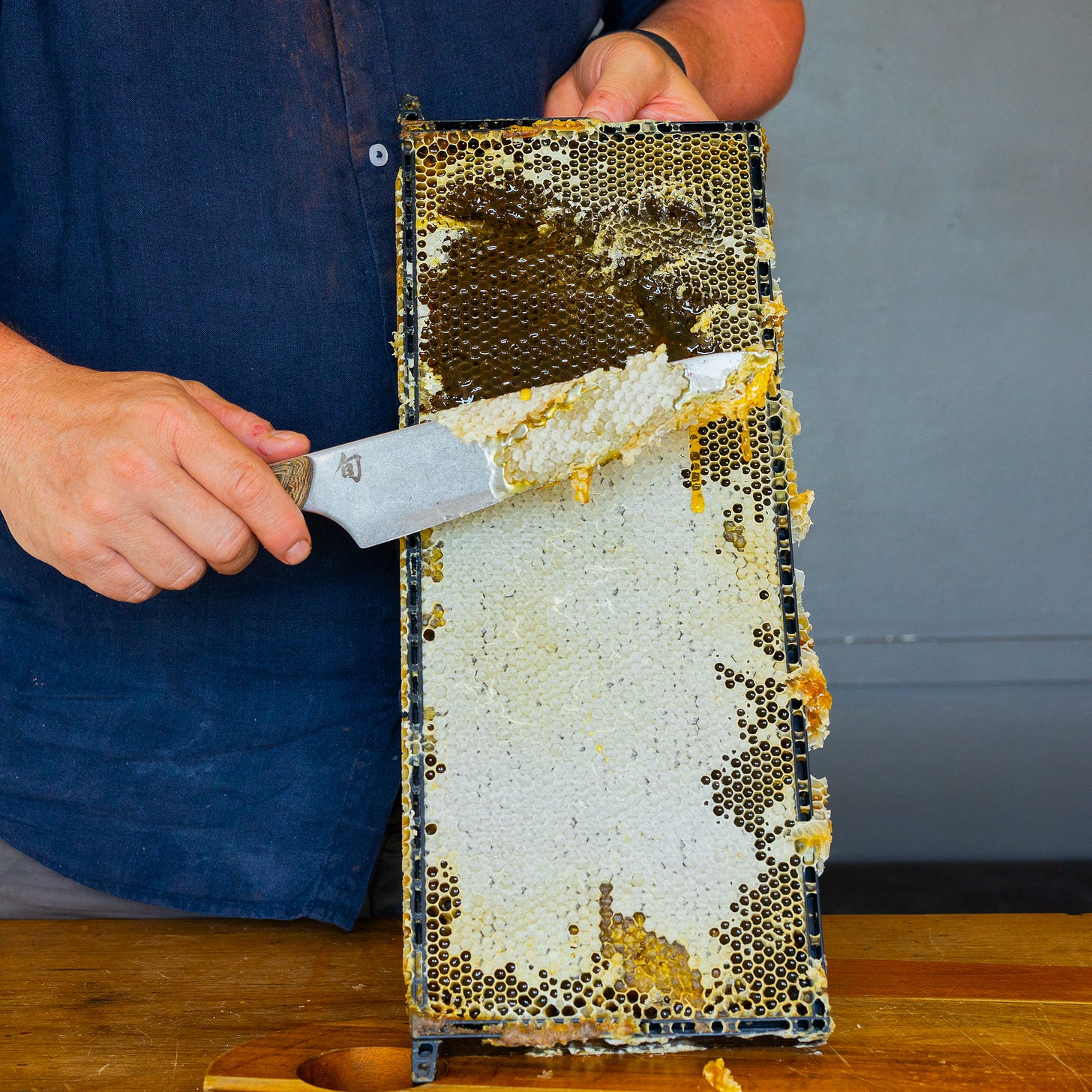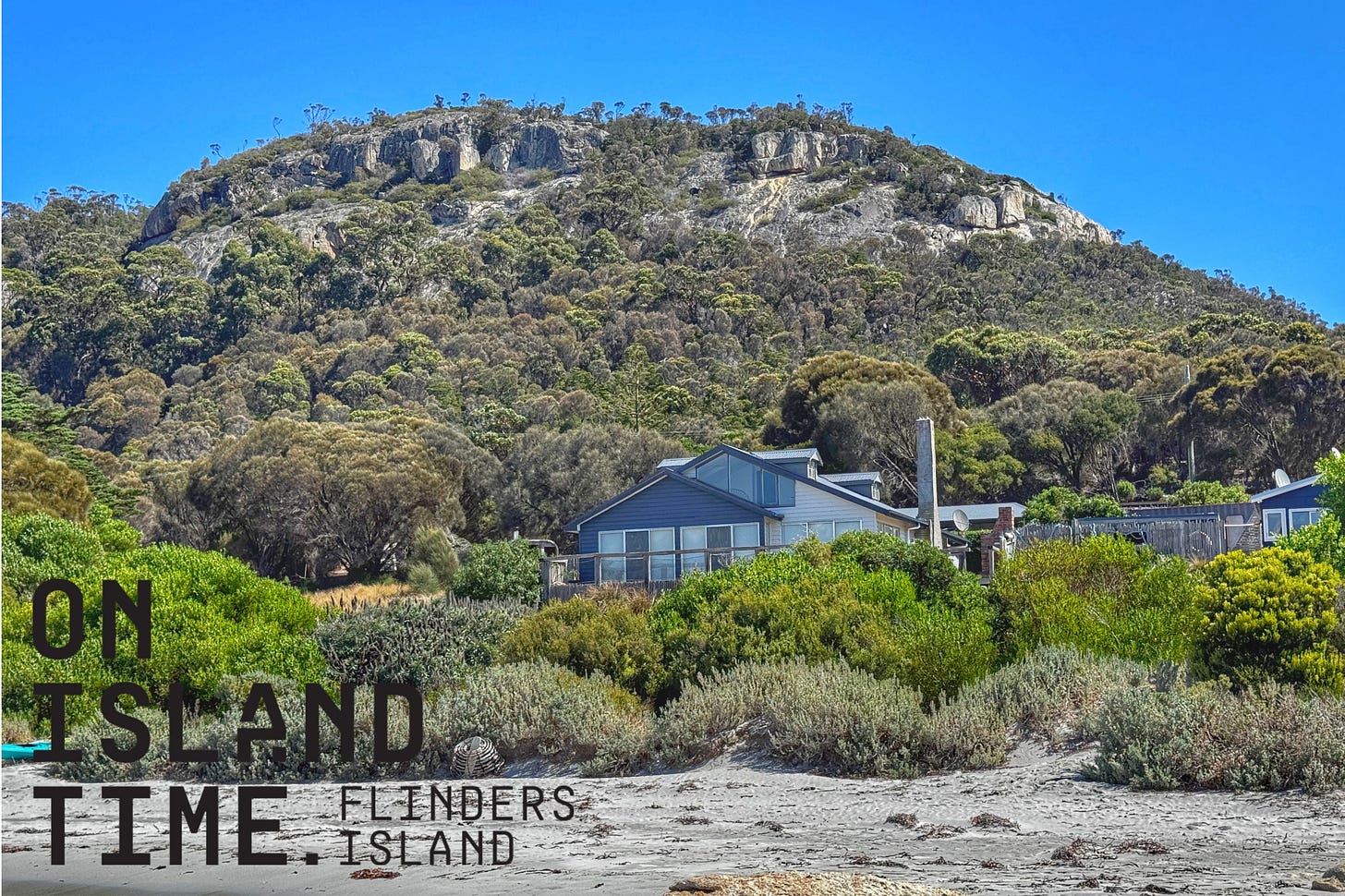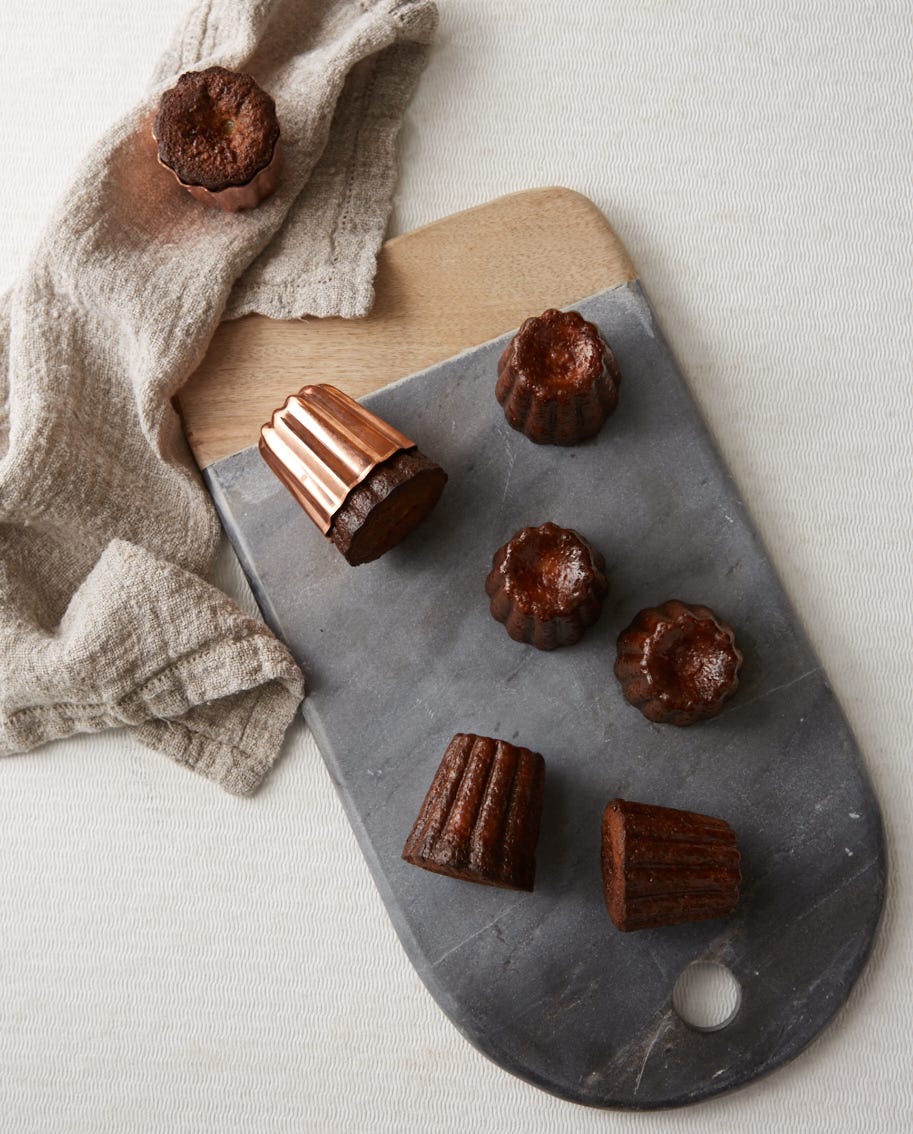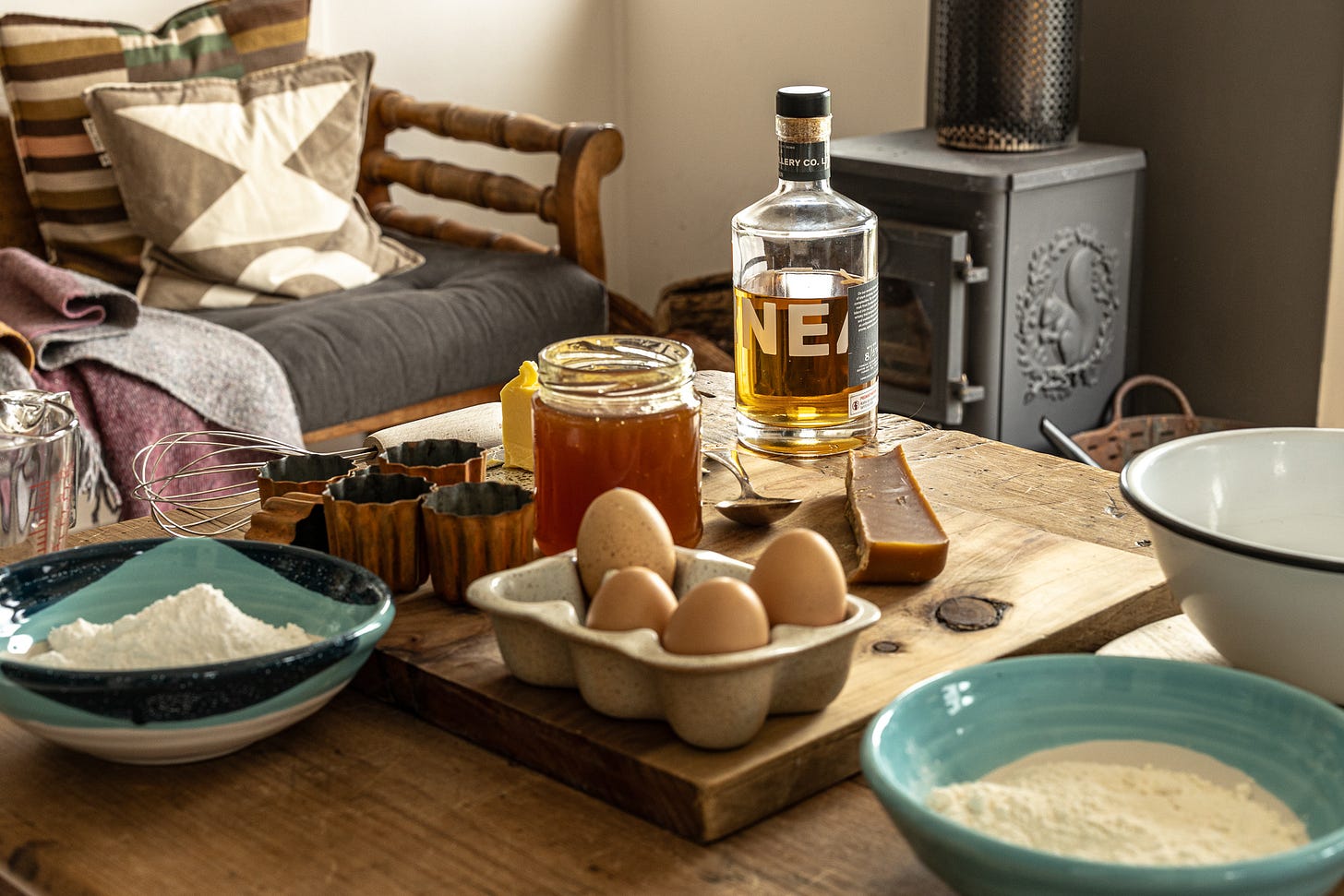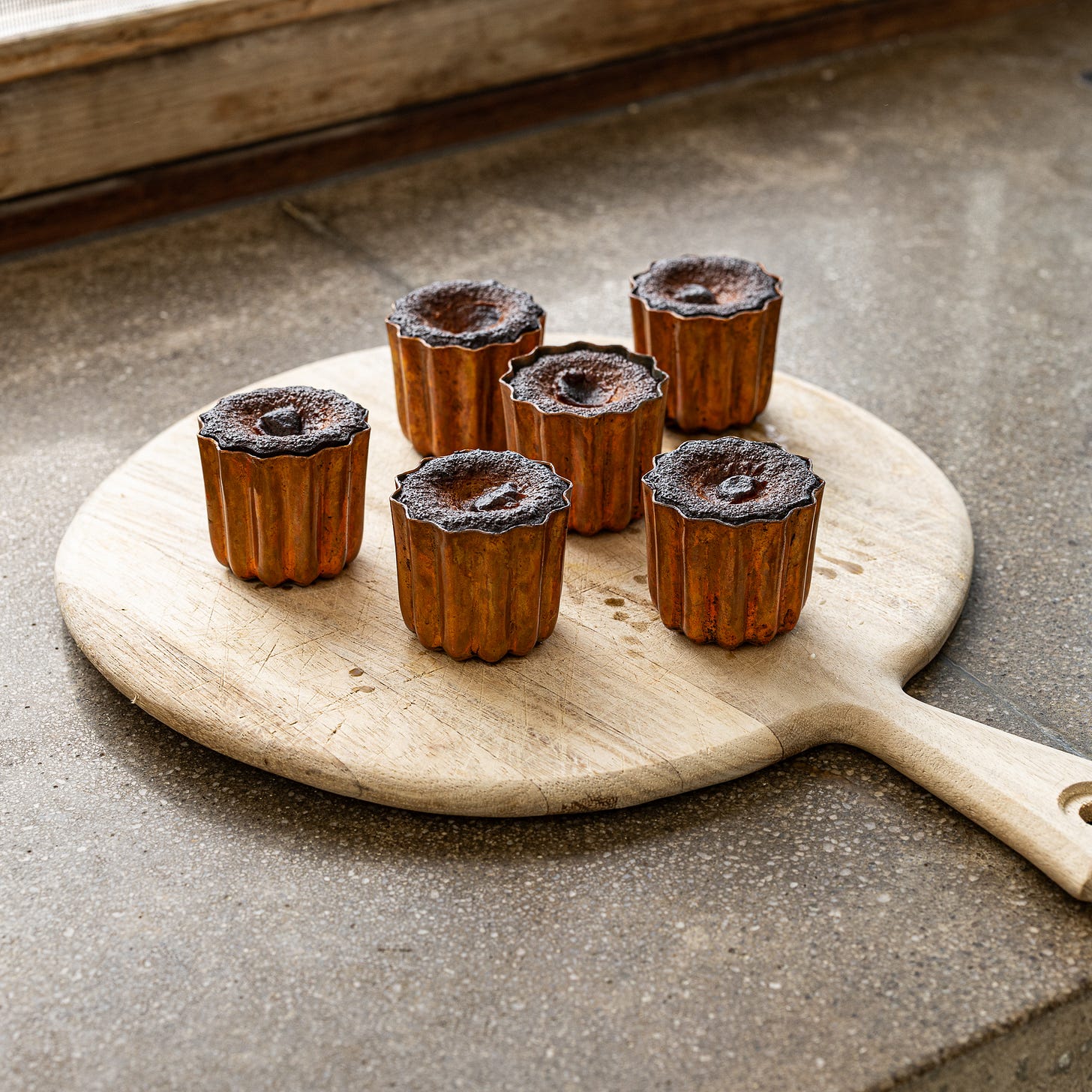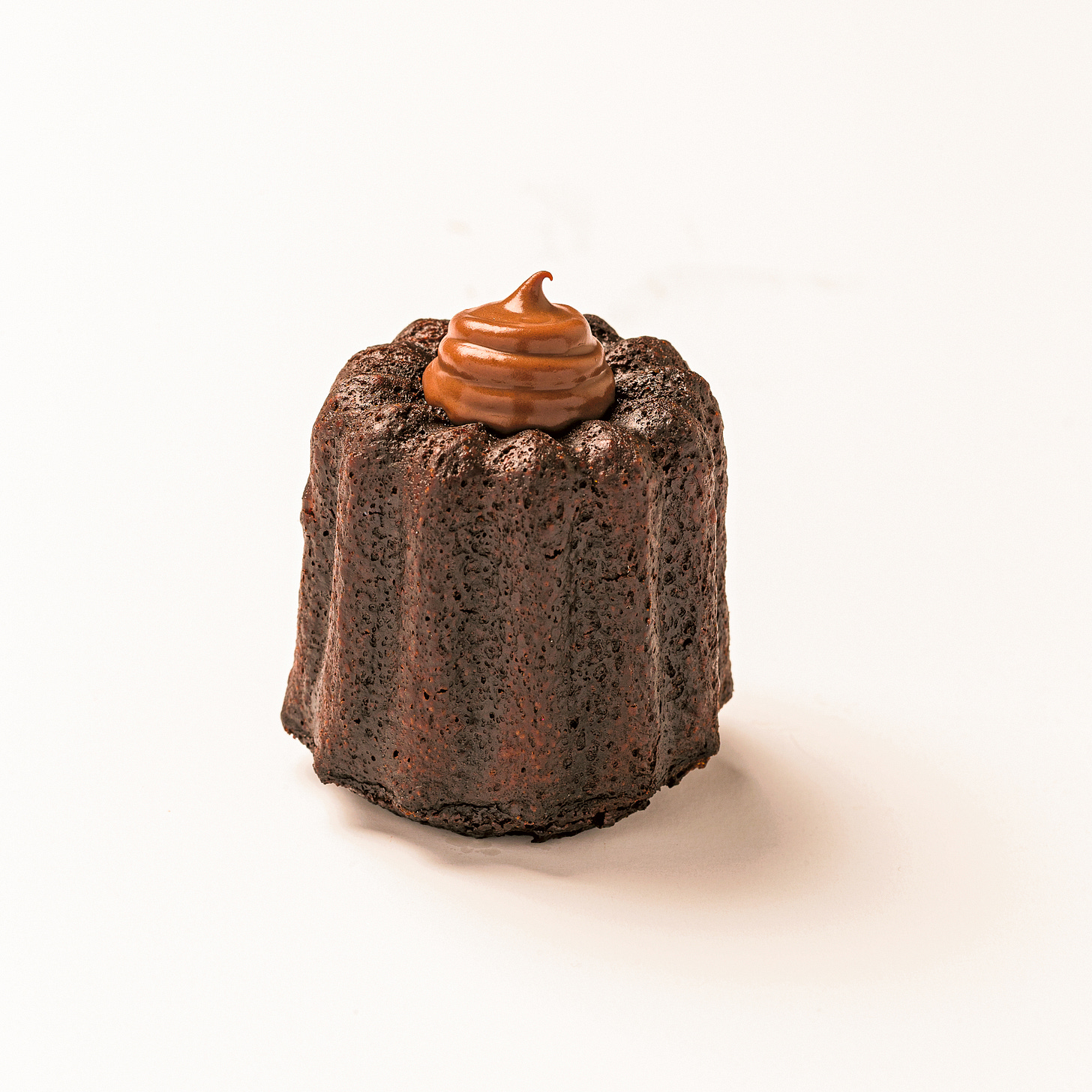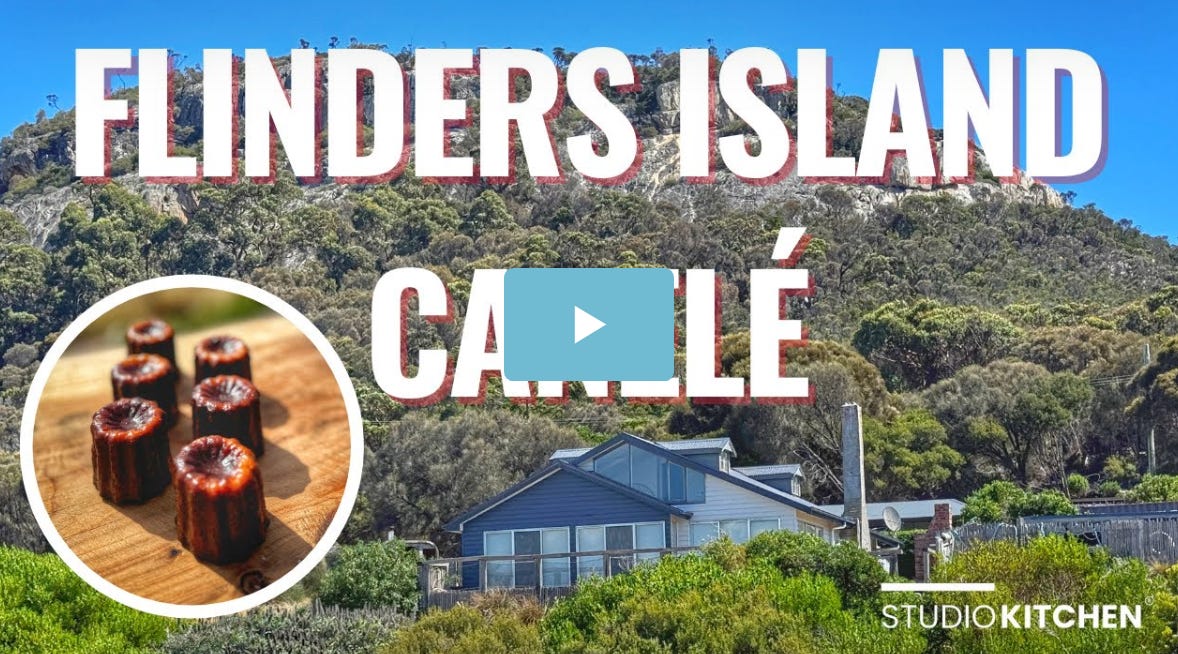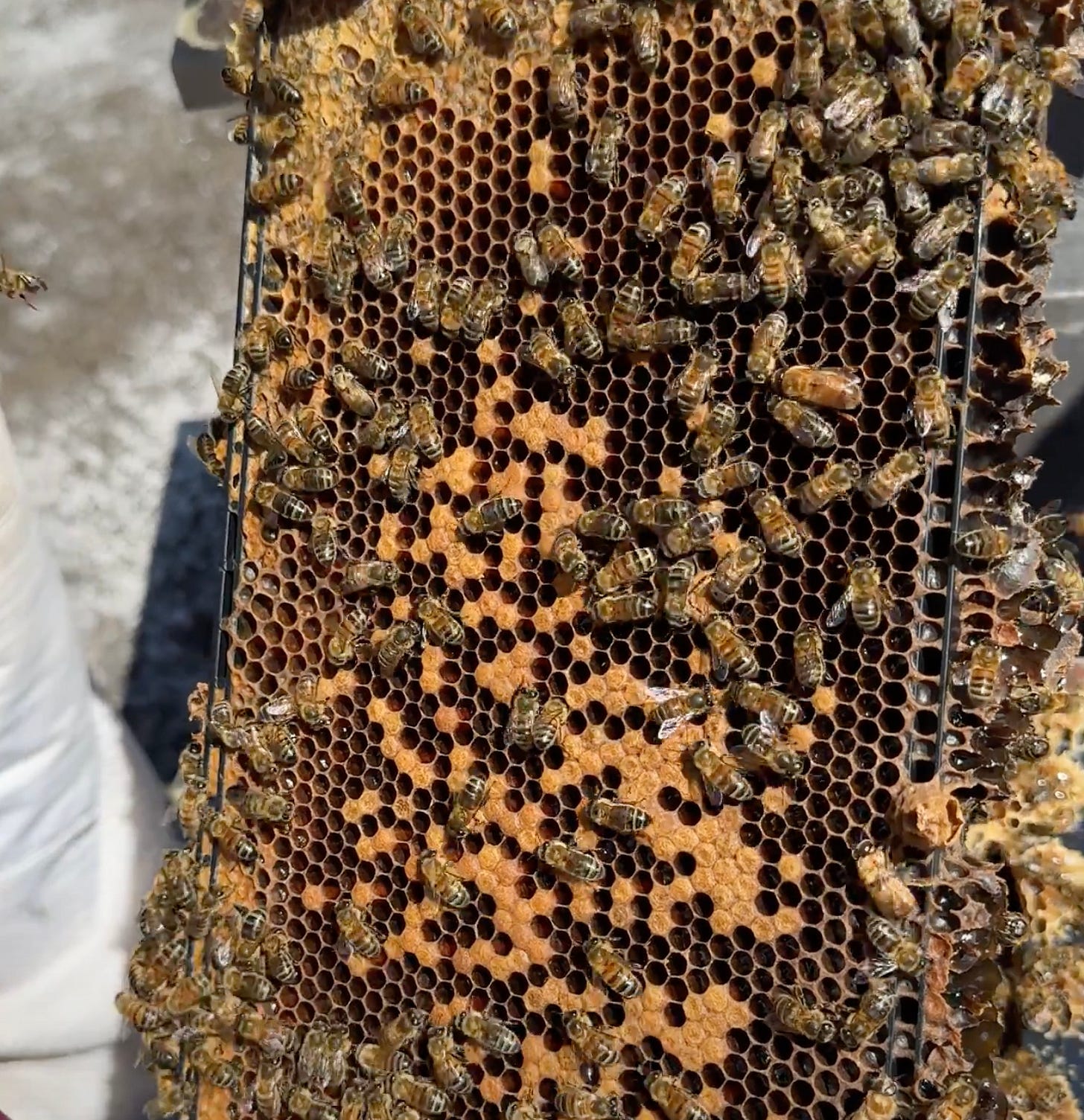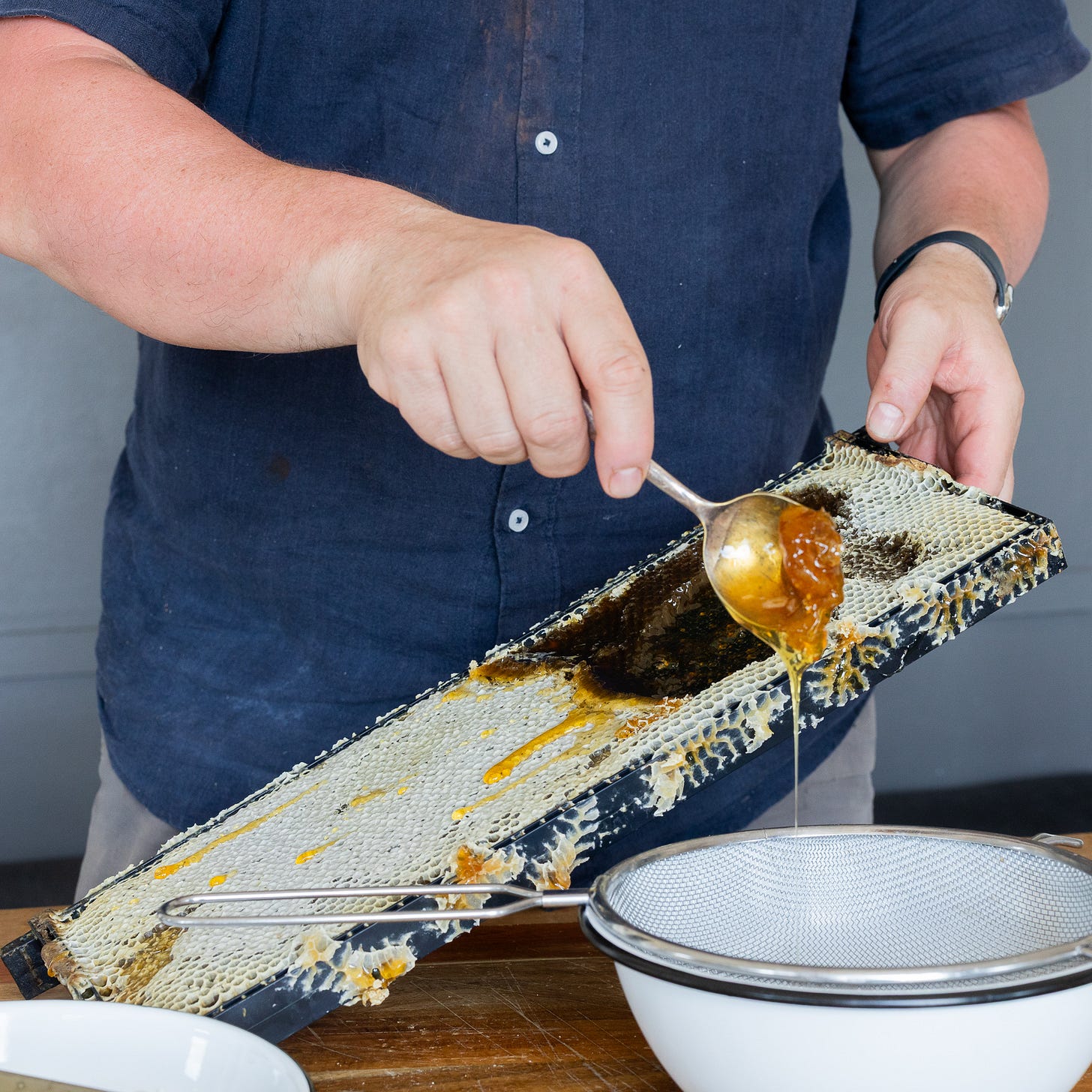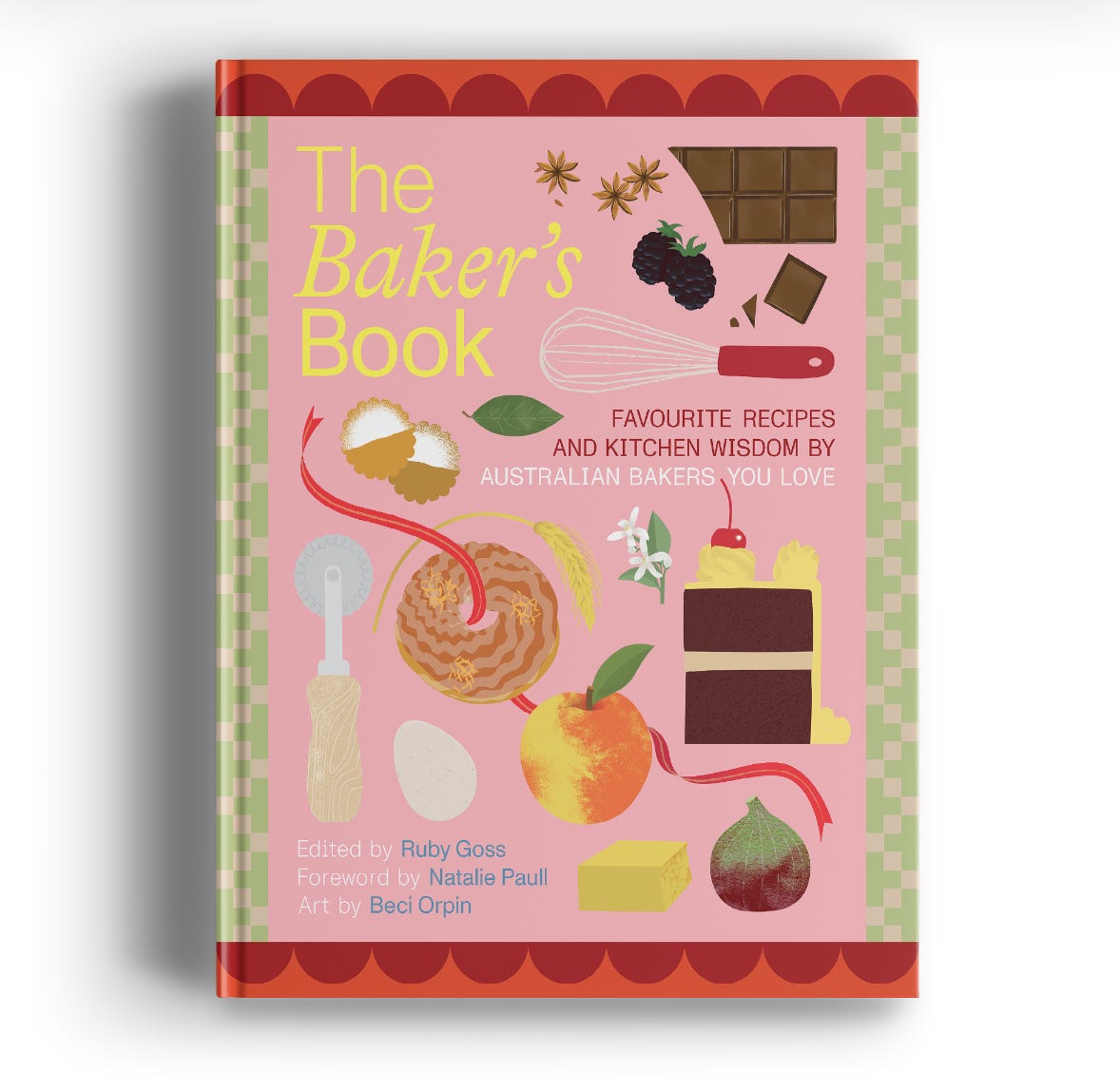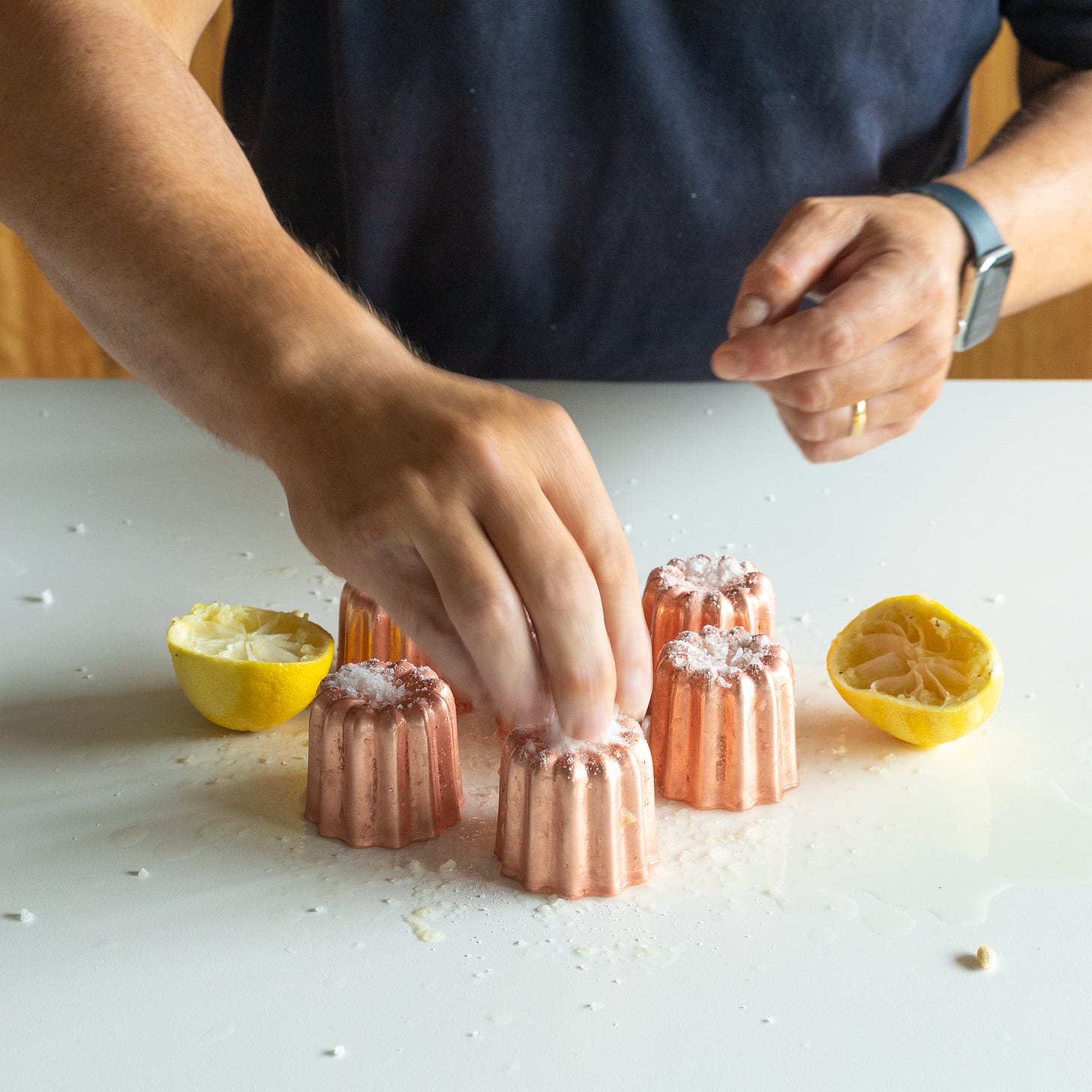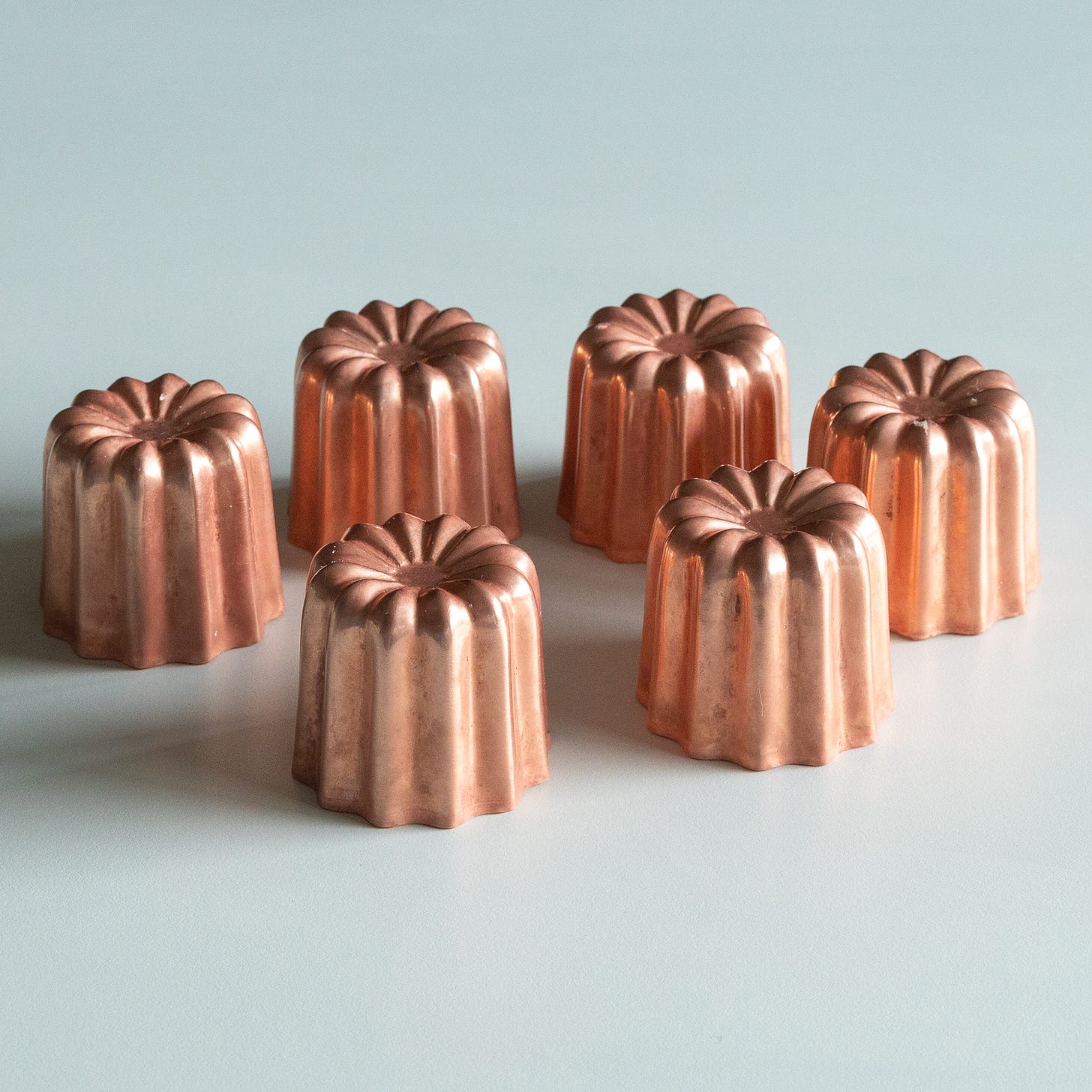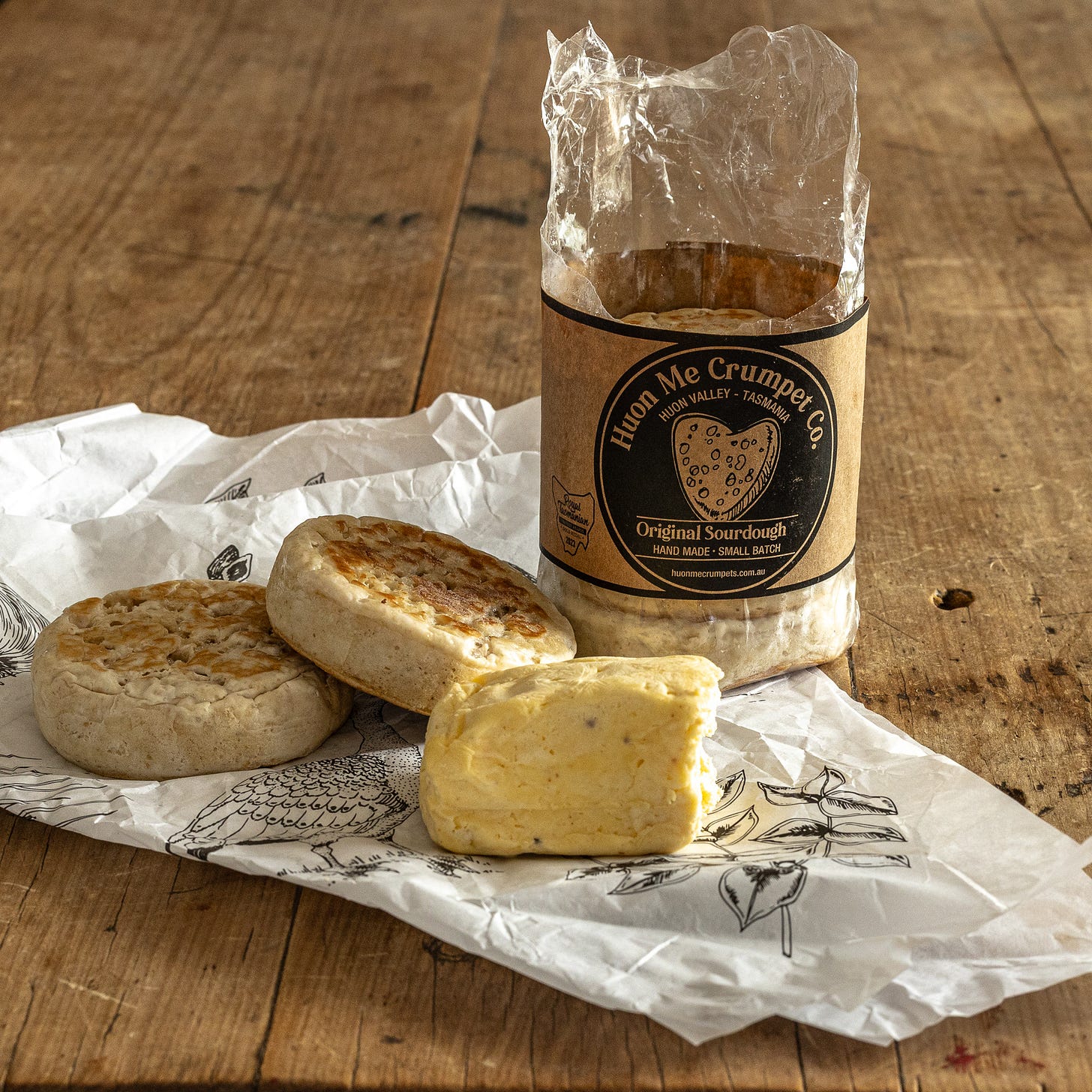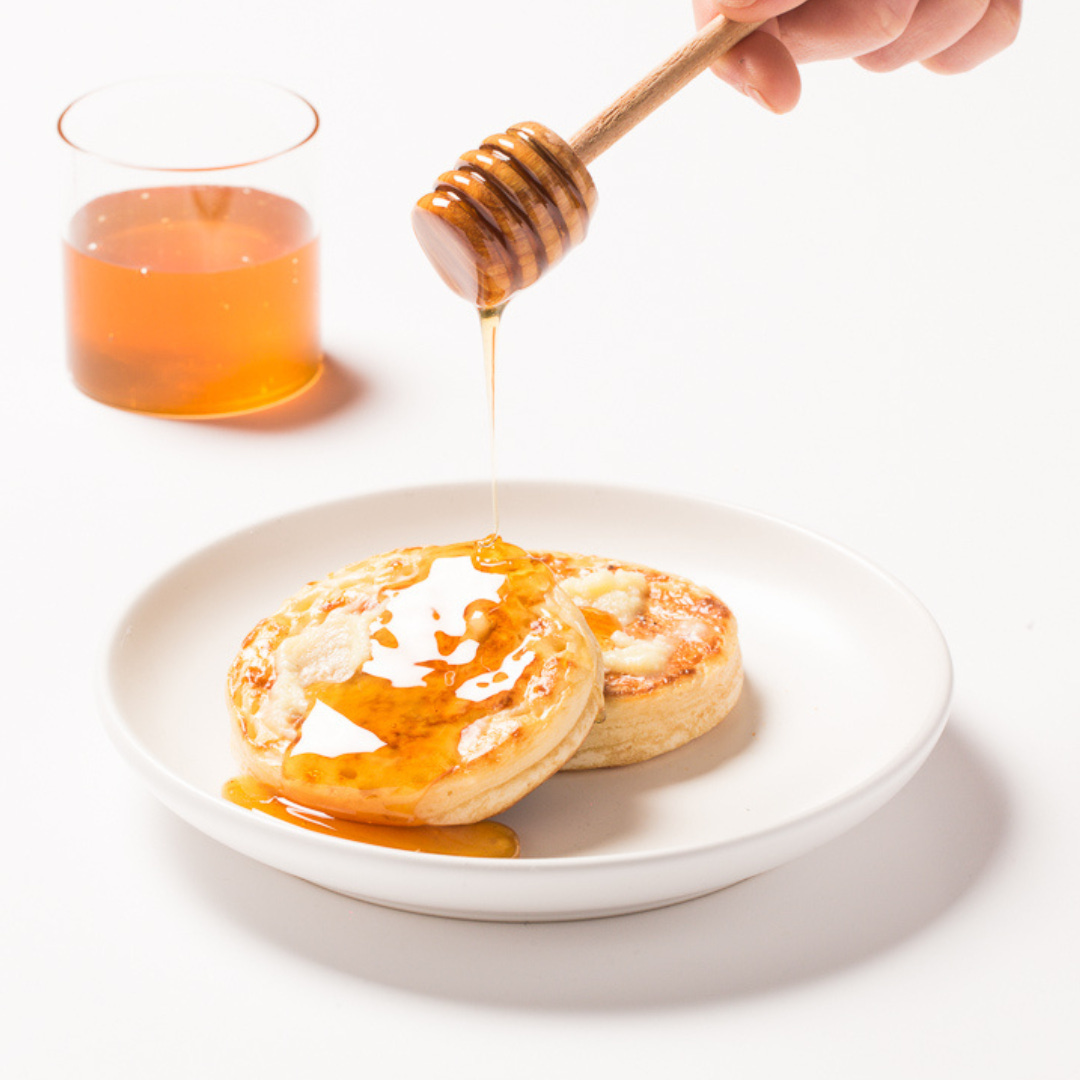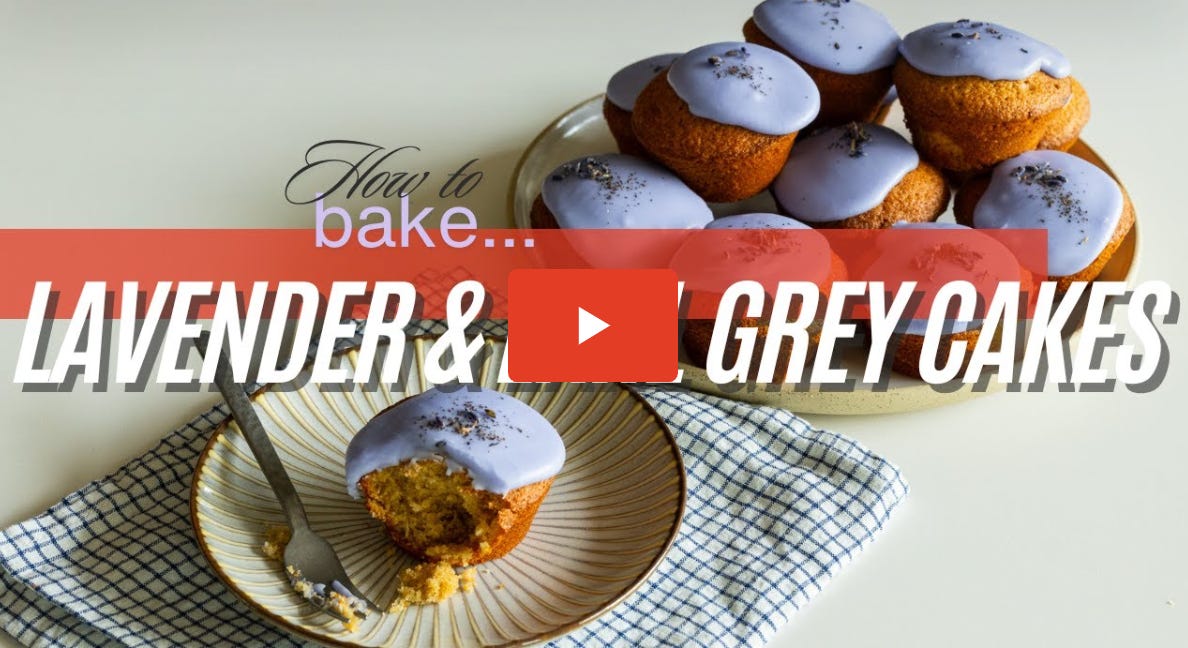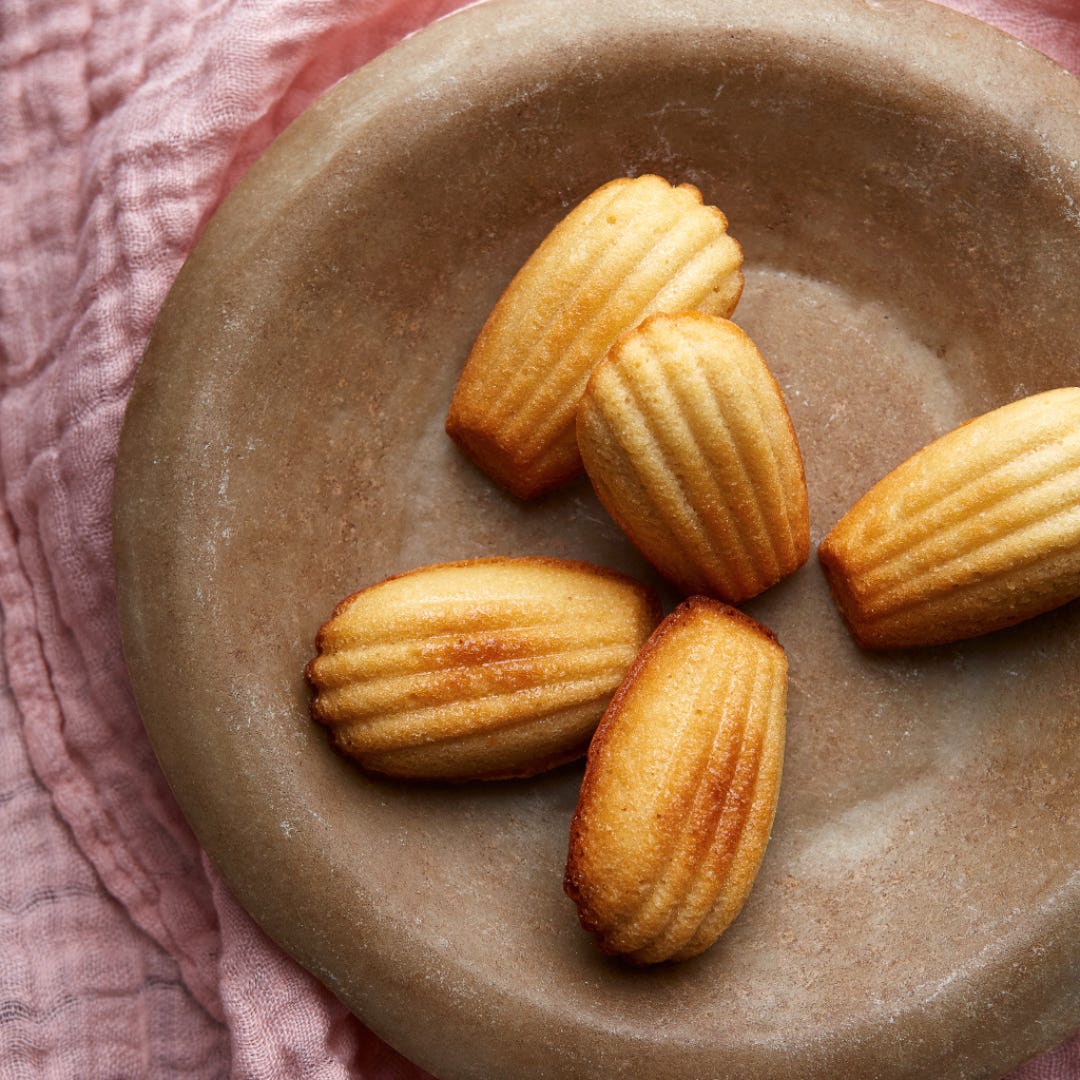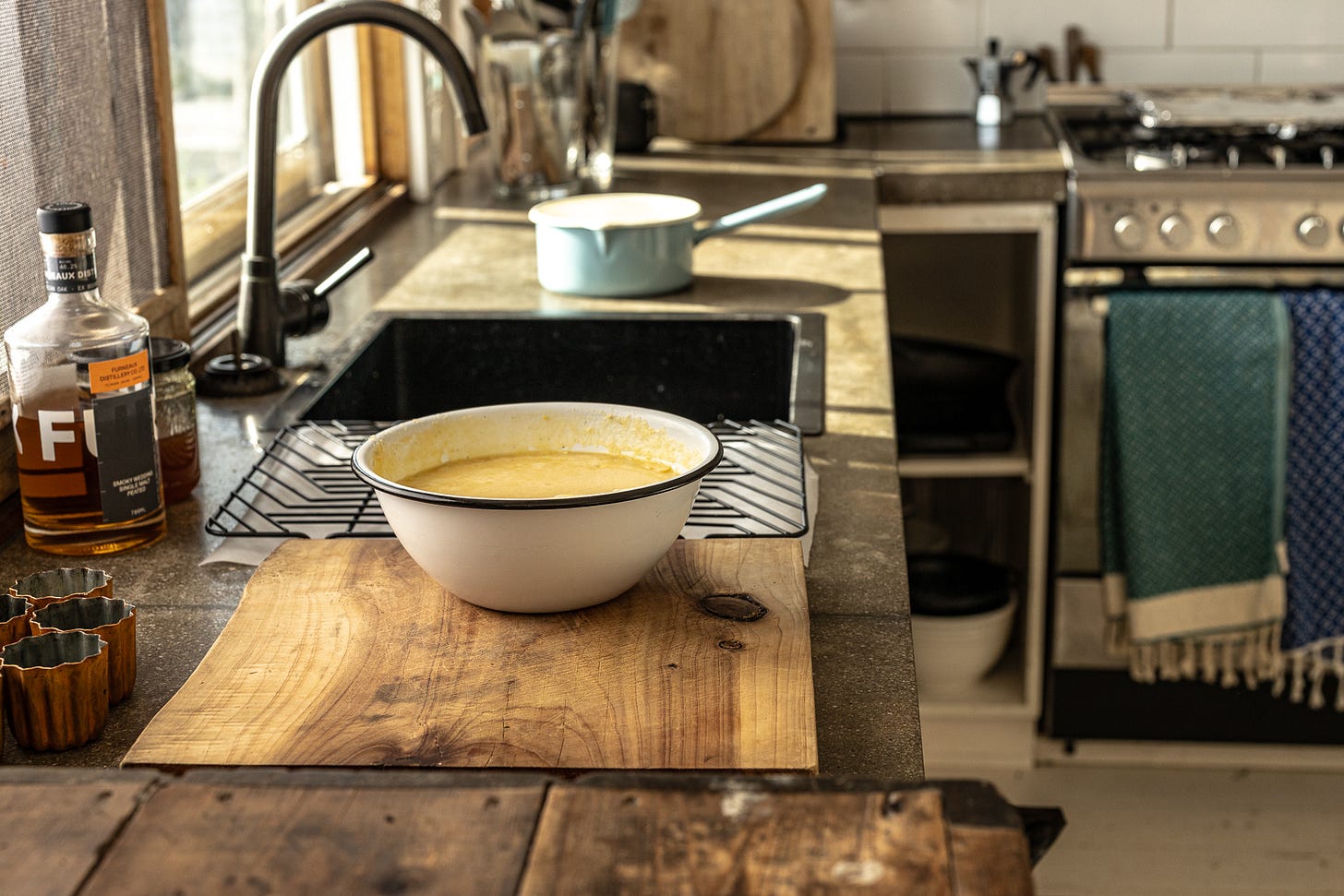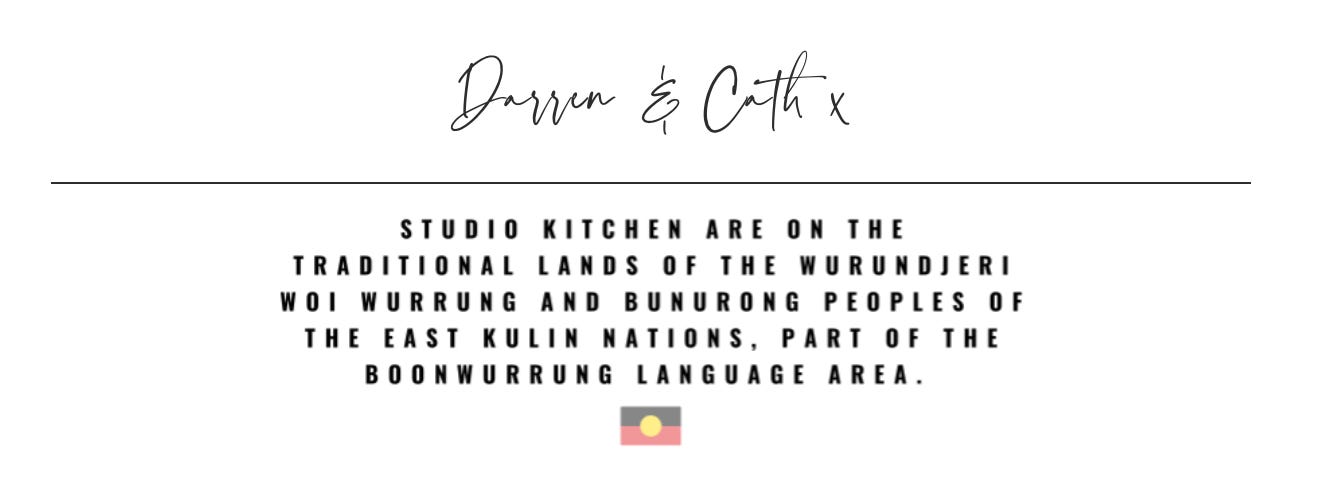Wednesday March 5th, 2025
Dear Foodie Family,
Brace yourselves —we’re buzzing headfirst into the incredible world of honey, inspired by our time on Flinders Island. Located in the Bass Strait between Tasmania and mainland Australia it is know for its pure, high-quality honey produced from the Islands pristine environment. The island’s isolation and diverse floral landscape, including native tea tree, Manuka, and coastal flora, contribute to the honey’s unique flavours.
Beekeepers on Flinders Island operate in a disease-free environment, free from pests like the varroa mite, making the honey exceptionally pure. The island’s bees forage on untouched native bushland, giving the honey complex floral notes and a rich texture.
Our amazing friends at On Island Time—the team that can craft your ultimate Flinders Island escape—introduced us to their fantastic beekeeper John Siermicki. He took us deep into the bush to see his hives in action and even gifted us a glorious frame of honey (pictured above) to extract and cook with.
Read on for Daz’s sensational Flinders Island honey-inspired canelé recipe, plus some other seriously good honey-infused treats.
Get ready to drizzle, slather, and eat it straight from the jar. 🐝✨
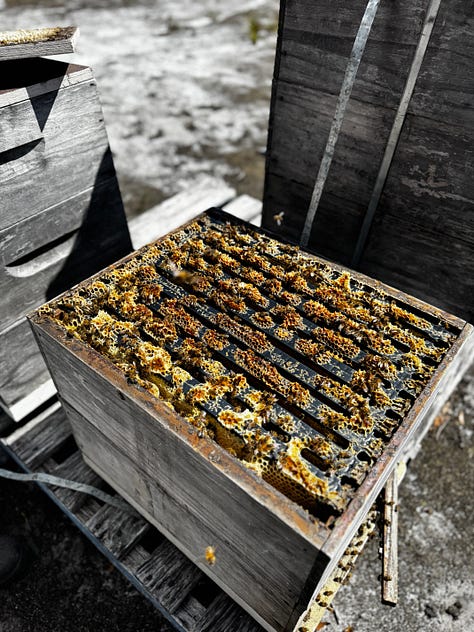
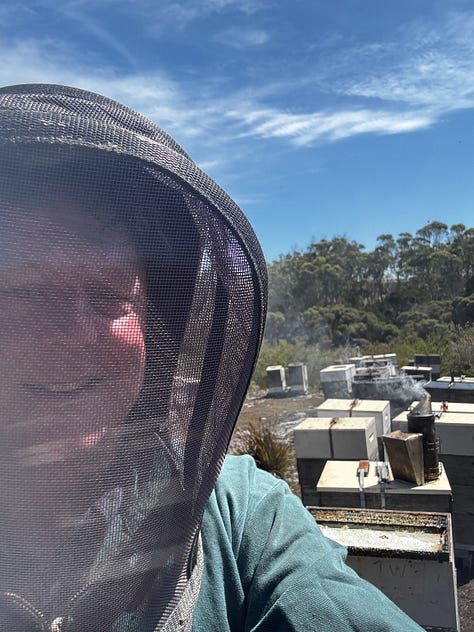
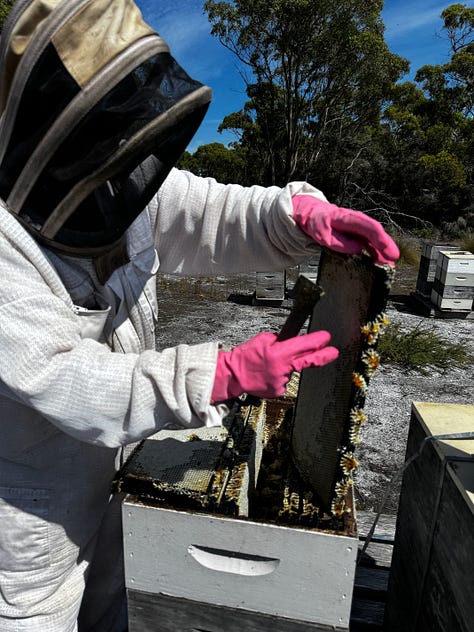
Flinders Island Recap
Read Darren’s article here
Canelé Dig it?
The Little French Pastry with a Big Cult Following
Canelé (also know as canelé de Bordeaux) is a small French pastry with a caramelised crust and a custardy, vanilla-rum-flavoured interior. It originates from Bordeaux and is traditionally baked in small, fluted copper moulds (pictured above) lined with beeswax, which gives them their signature glossy, crisp exterior.
A perfect canelé has a deep, dark brown crust—almost burnt-looking—and a soft, almost pudding-like centre. The contrast between the crunchy shell and the tender inside makes them irresistible. The batter is similar to a crêpe batter, made with milk, eggs, flour, sugar, vanilla, and rum, and it requires a long rest (often overnight) to develop its flavour.
Canelés have a bit of a reputation for being tricky to perfect. Getting the right balance of crust and custard takes patience, and the baking process involves high heat to ensure the crust sets before the interior cooks through.
At The Crayshack, our gorgeous hideaway on Flinders Island, Darren experimented with a local version of the canelé. (And yes, we do travel with canelé moulds—doesn’t everyone?).
The Island beeswax is a rich dark caramel colour (pictured below with Island honey), it had such a rich aroma that when we heated it, the local bees came by to see what was cooking.
While a classic canelé recipe doesn’t include honey, Darren swapped some of the icing sugar for local honey and swapped the rum with an incredible local whisky (pictured below) from the world class Furneaux Distillery, just a short drive down the road from our shack.
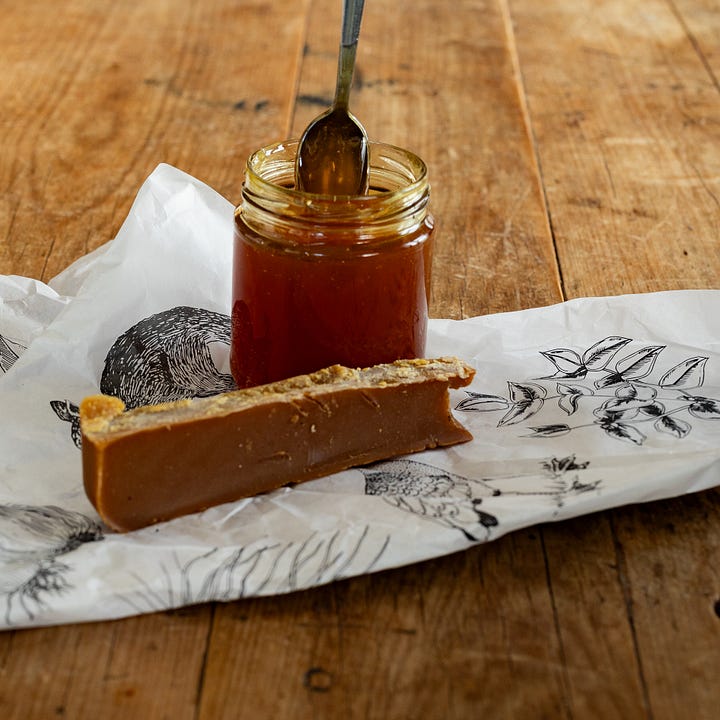
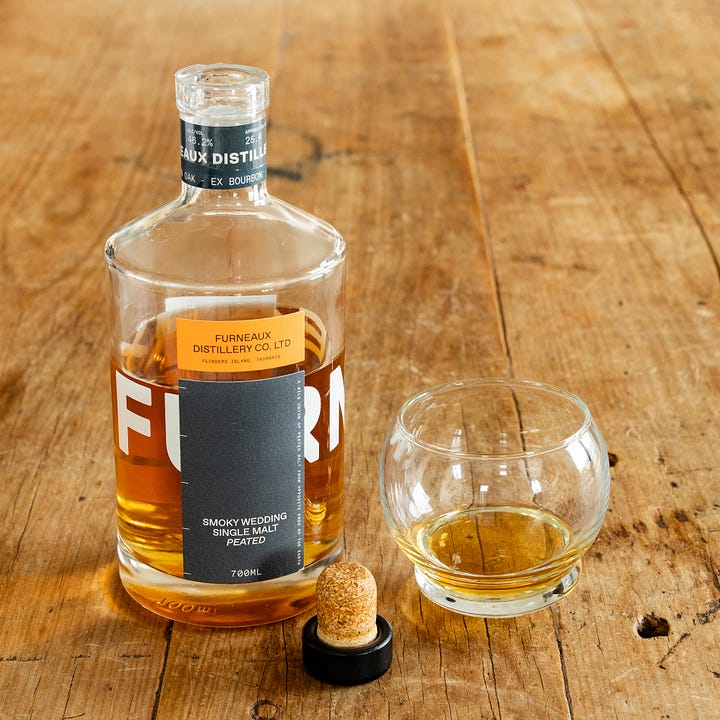
The result? Absolute stunning! At first bite, your teeth crack through its deep, mahogany crust—giving way to a tender, almost custardy interior. The contrast is everything: crisp, rich but light, with a delicate chew that lingers just long enough to make you want another.
The flavour? A heady mix of island honey, butter, vanilla, local whisky and that distinctive dark beeswax. A single, perfect bite that captures the wild magic of Flinders Island.
We made a little 15 minute holiday movie of this recipe for you. The link is a little further down. Watch it and you'll understand why we love the unspoilt beauty of Flinders Island.
And then there's Darren's Chocolate Canelé—topped with a luscious swirl of chocolate cream, it's a Francophile’s dream come true. Want to know more? Click through to the recipe for some fascinating canelé facts, and don’t miss Darren’s Baking Corner, where he shares his tips for caring for canelé moulds.
Canelés in the Wild - Watch Now
The Bee's Knees
Bees are the coolest, cleverest creatures and we absolutely love them. Not only do they produce the honey that we adore but they are essential to our ecosystems and food supply. They pollinate approximately 75% of the world's flowering plants, including over a third of the crops we rely on. Without them, global food production and biodiversity would be at serious risk.
Beyond their role as pollinators, bees are remarkably efficient and strategic. Honeybees, for example, communicate through precise movements known as the waggle dance to direct hive members to optimal foraging locations. Their hives are feats of natural engineering, with perfectly hexagonal honeycombs that maximise storage while minimising material use.
Bees also contribute to environmental health by supporting plant reproduction, helping forests, gardens, and farmlands thrive. In addition to pollination, they produce valuable natural resources such as honey, beeswax, and propolis—substances humans have used for millennia.
They groom themselves to prevent disease.They keep their hives cool in summer by fanning their wings and distributing water, in winter they generate heat by clustering together and vibrating. Even their nutrition is carefully balanced.
Despite their resilience and adaptability, bees are increasingly under threat due to habitat loss, pesticides, and climate change. Despite the challenges they face, there’s plenty we can do to support bees and help them thrive. Planting bee-friendly flowers, reducing pesticide use, and championing sustainable farming practices all make a difference. Every garden, balcony, and green space can become a tiny sanctuary for these incredible creatures. Their resilience, teamwork, and dedication to the hive are nothing short of inspiring—so let’s do our part to keep them buzzing. I’m heading outside now to plant some bee-loving flowers! 🌼🐝
There's a New Book in Town
Exciting news for all you baking lovers! The Baker’s Book – Favourite Recipes and Kitchen Wisdom by Australian Bakers You Love, is coming soon. Featuring more than 30 of Australia’s best home bakers, pastry chefs, and small bakeries—including our very own Darren Purchese. This community-driven collection brings together 60+ recipes, from everyday favourites to special-occasion showstoppers, celebrating the magic and kindness of baking in all its forms. Out April 1st—Preorder your copy now and be the first to get your hands on this must-have book!
Baking Corner
Darren here. I think it’s clear by now—I’m obsessed with canelé!
Cleaning and maintaining the moulds for me is just as important as the recipe itself but it's simple with coarse salt and lemon juice.
Here’s my top tips…
Cleaning
Avoid harsh chemicals or abrasives that can damage the copper or it's non-stick seasoning.
Wash with mild soap and warm water using a soft sponge or cloth.
Rinse well and dry immediately with a soft cloth to prevent water spots.
Polishing with Salt & Lemon
Cut a lemon in half and squeeze juice over the mould.
Sprinkle coarse salt on top—the lemon's acidity lifts tarnish while salt acts as a gentle scrub.
Rub with a soft cloth or sponge, covering all areas.
Continue for 30 seconds to 1 minute until the copper shines.
Rinse thoroughly, dry, and buff with a clean cloth.
Extra Tips
For stubborn tarnish, let the salt-lemon mix sit for 10–15 minutes before scrubbing.
Swap coarse salt for baking soda or white vinegar if needed.
To prevent tarnish, rub molds with a little cooking oil after cleaning.
Skip abrasive materials like steel wool—they’ll scratch the copper.
With these steps, your moulds will stay clean, polished, and ready for perfect canelés! And I promise you they are worth the effort.
Want to see how I clean them, watch me here.
DP x
Any vexxing baking issues? We'd love to help where we can, email us here with your culinary questions and we will endeavour to answer them here in a future baking corner. Happy baking…
Golden, Gooey, Gone in Seconds!
What's better than a sensational crumpet like the stunning Tassie ones pictured above? A crumpet made with your own bare hands, slathered with whipped Brown Butter and drizzled with honey. Darren's Crumpet Recipe is one of our most dowloaded which just proves how much we all love them. Make some and slather it in the spirit of this weeks reading.
Watch Now - So Simple & Delicious
Recipes That Stick
We hope we leave you inspired to try some honey recipes this weekend. It's a delicious natural wonder that pairs beautifully with a wide range of flavours, from sweet to savoury. Why not make some real Honeycomb - you might be surprised to know that most commercial honeycombs don't contain any honey at all.
We love to drizzle honey over tangy cheeses like blue or goat’s cheese for an irresistible contrast. Our favourite Granola is baked with pure honey, survived with fruit and yoghurt, it is our favourite way to start the day.
Honey enhances roasted meats—especially pork, duck, and lamb—by adding a delicate caramelised glaze. Honey also works wonders in dressings, balancing the acidity of lemon or vinegar. For a simple yet perfect treat try Darren's light and buttery Honey Madeleines in Honey Syrup pictured above.
And let’s not forget desserts—honey adds depth and complexity to cakes, biscuits, and ice cream. Stir it into tea, whip it into butter, or bake it into a warm, fragrant loaf. However you use it, honey brings a natural sweetness that’s hard to beat.
So, this weekend, get baking and experimenting with this golden wonder. And if you do try one of our honey-filled recipes, we’d love to see it—tag us and share the sweetness!
One More Thing
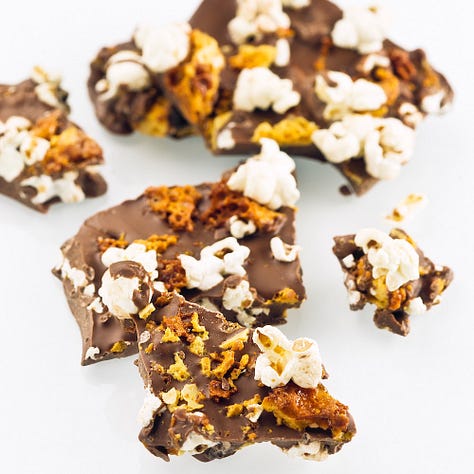
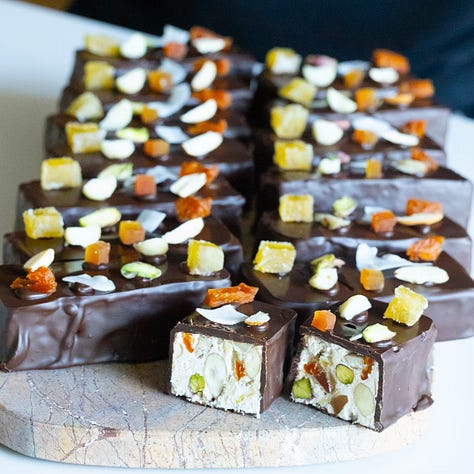
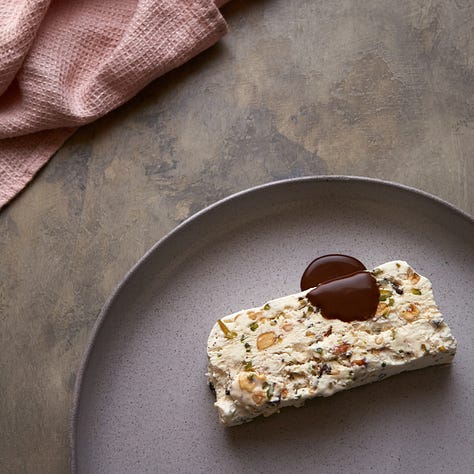
Milk Chocolate Popcorn & Honeycomb Rubble - One of the best things that happened to honeycomb. Praise the Bee 🐝🍯
Honey Nut & Candied Pineapple Nougat - Thank you, bees, for turning flowers into liquid gold so we can turn it into nougat—because without you, we'd just have a sad pile of nuts and sugar.
Frozen Honey Nut Slice - Without bees, we couldn't make our frozen honey nut slice. We love you Bee's 🐝🍯
Until Next Week
Remember: the only thing better than a canelé... is a second one.
Catch you next time, food lovers!
Instagram @lovestudiokitchen
Facebook: Studio Kitchen
YouTube: LoveStudioKitchenOfficialChannel
Email: team@studiokitchen.com.au


